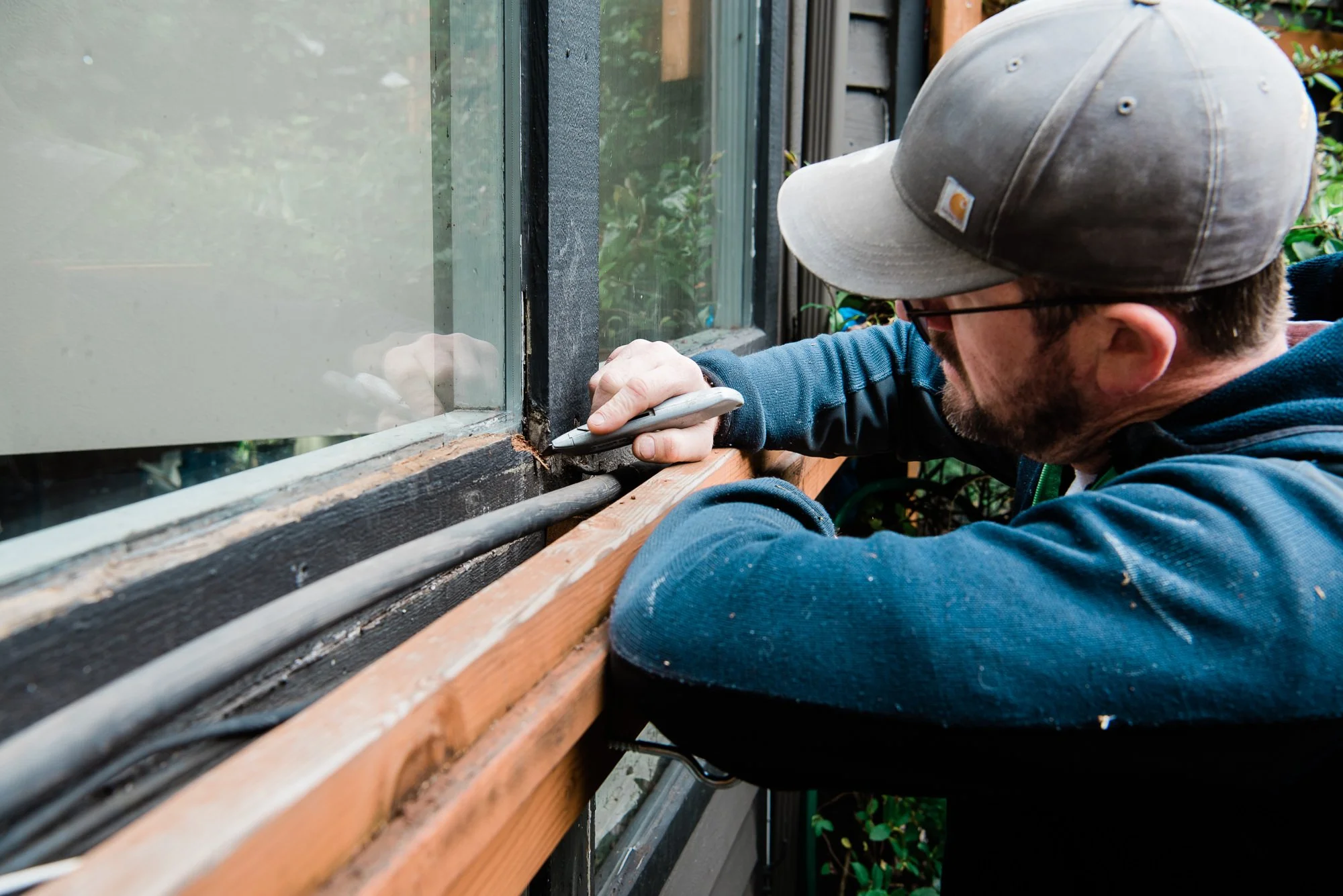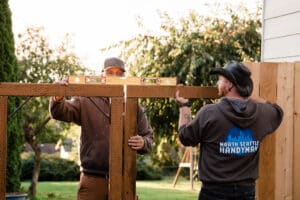
WOOD ROT REPAIR GUIDE
Wood rot repair is one of the most frustrating home repairs here in the Northwest. The reason it’s so disappointing is you might end up spending a lot to repair wood rot that you don’t get to see the benefit of daily. Unlike a kitchen remodel, when you pay 50k and get a new kitchen with wood rot, you can’t see the fix daily. But, if left untreated, wood rot can spread, and you’ll spend $10-20K. This is why it is pretty essential to catch it early.
If wood rot is caught early, you can replace the window trim, but you avoid replacing the trim, the window, the siding, framing, and insulation. Bad wood rot can sometimes even mean replacing the interior drywall!
WHERE DO YOU FIND WOOD ROT?

The most common areas of wood rot are:
- Windows.
- Doors.
- Specifically, any wood substrate on or around your windows or doors.
- Fascia boards that your gutters are attached to.
- Wooden siding that hasn’t been painted for some time or makes contact.
- On and around wooden decks.
WHAT IS WOOD ROT?
To better understand wood rot, the first key is understanding its ingredients.
Wood rot requires four essential ingredients
Wood, water, oxygen, and time.
If you remove any of these ingredients, your wood will stop rotting and become some form of dry rot. Dry rot is a wooden substrate that is no longer wet and thus no longer actively rotting, and it is still structurally compromised but not technically getting worse.
Rot is a pretty incredible process that nature has come up with that allows all the dead trees in the forest to eventually decompose back into the soil, but it is a terrible thing to have in your house. If left to its own devices, your wood will ultimately become something that you can easily put your finger through, and if your finger can get through it, then water can too, and we have a lot of water in the northwest.

WHAT IS THE PROCESS?
The first defenses we have against wood rot are
- treatments or paints
- naturally water-defensive woods like cedar or spruce.
Using these materials will help keep your wood healthy but only for so long without maintenance.
The process works like this:
The wood has natural water defense if you have a painted window trim made of spruce or cedar. But it still needs maintenance to keep rot out. If you don’t keep up the caulk and/or paint every five years or so, the ultraviolet rays of the sun will break down the paint and allow the wood behind the paint to start to get wet.
If this happens on the face of the wood, it will take a long time to rot unless your wood starts to crack or split. If this occurs at the end grain of the wood, then it happens much more rapidly. The end grain of the wood is like a sponge and is highly porous. This is how water travels up to the branches of a tree from its roots. Unfortunately, when the wood is dead, it just sits there and becomes sodden. Once the wood is saturated, the process of rot begins. It will dry out if left in the sun or a dry period, but the more time it spends in this saturated state, the more quickly it will soak in water.
In most places with dryer climates, this could take a long time. Around here, it is exacerbated even further by our winters. Our winters are somewhat unique because it freezes regularly around here but then thaws. Our winter temperatures oscillate between freezing and above freezing all winter. Here is why that is a problem. Whenever water freezes, it expands. So if water gets into a hole in your wood, it will freeze, making that hole or crack just a bit bigger. Wood rot happens in places like Ellensburg, too. It’s just that it only happens once or twice a winter. In Seattle, it happens several hundred times a year, thus opening up cracks in the wood that hold water and start to rot.
THE SOLUTION







